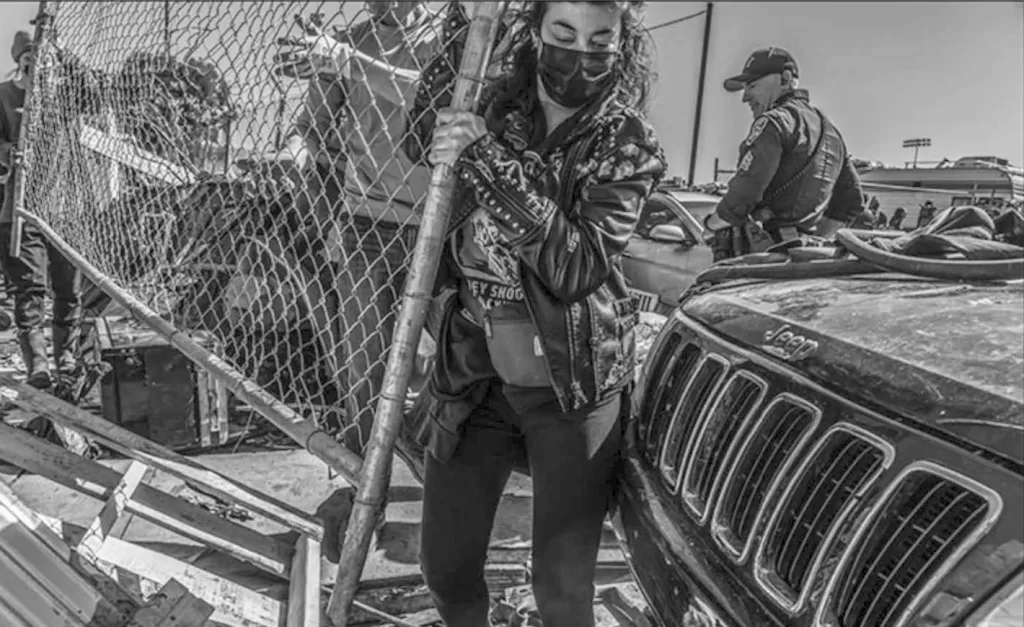
Photos on this page are by David Bacon
Editor’s note: This article was originally published by Capital and Main on 4/24/23. View it here: https://mailchi.mp/igc/new-book-extraordinary-portraits-of-farmworkers-their-families-and-communities-150751?e=4f345bb9bd
Since Monday, April 10, 60 of Oakland’s unhoused people have been facing earth movers with metal jaws, piling belongings and refuse into garbage and dumpster trucks. Their encampment, which they call Wood Street Commons, occupies two city blocks between Wood Street and the freeway maze leading to the San Francisco Oakland Bay Bridge. Spaced across the area are tents, RVs, trailers and even a two-story plywood house.
This is the last remnant of what was once the largest homeless encampment in northern California. It is the southern tip of an area that extended from the edge of the old 16th Street railroad station to beyond 34th Street – at least 17 blocks – under the freeway maze itself and next to a train trestle that once brought goods in and out of the old army base.
The two-block Wood Street Commons is part of the old Prescott neighborhood of West Oakland, once one of the poorest in the city, where rundown homes sat next to small factories and warehouses. Just beyond a chain link fence bordering the area is the old 16th Street Station, where the last train stopped in 1994. The ornate but abandoned structure is being restored as an historic jewel, and is rented as a site for private events by its owner BUILD, an affiliate of BRIDGE Housing.
Across the street from the Commons begin new townhouse developments that go on for blocks. They are the future, and these unhoused residents are in the way. In 2005 Oakland adopted the Wood Street Development Project. “The area surrounding the intersection of Mandela Parkway and West Grand Avenue will be a major employment area,” it said, “with preservation of existing historic buildings and the addition of compatibly scaled larger development.” The Final West Oakland Specific Plan was last updated on January 20th, 2021.
In 2007 the city purchased the 3.2 acres the Commons occupies for $8.5 million, and In 2018 found a developer, MIDPEN Housing Corporation and Habitat for Humanity, which promised to build 170 units of affordable housing on the site. That’s not much consolation for the unhoused residents being evicted, however. With no income, no fixed residence and having to wait for years for construction, it’s unlikely that any would ever be able to live in the promised homes, any more than they can live in the blocks of new townhouses.
The California Department of Transportation began an effort to evict residents from the larger area under the freeway a year ago, where approximately 300 people were living. Last July Federal Judge William Orrick issued a temporary restraining order (TRO) to stop those evictions, but in August lifted it because, he said “there is no constitutional right to housing-to allow Wood Street [residents] to stay on the property of somebody who doesn’t want it.”
People were forced to leave shortly afterwards, and today that huge area is a barren expanse of dirt under the freeway. That left those living onhttps://mailchi.mp/igc/new-book-extraordinary-portraits-of-farmworkers-their-families-and-communities-150751?e=4f345bb9bd the two-block area of the Wood Street Commons, on land belonging to the city. On January 9 residents, represented by the East Bay Community Law Center, filed for a TRO against the city to stop their eviction.
On February 3 Judge Orrick lifted the order, however, after Oakland announced that replacement housing for the displaced people was available. On February 24 the city declared that it had opened the Wood Street Community Cabin site eight blocks away, with 32 bed spaces available, and an RV parking area with 28 spaces on 66th Avenue in East Oakland.
In a statement announcing a demonstration by residents and supporters on the day the evictions started, leaders of Wood Street Commons said, “Many residents moved to Wood Street from other locations around the city, after Oakland police officers instructed them to move here. We believe that given how long people have lived here, that we deserve more than “adequate shelter.” Additionally, the fact that these so-called evictions are taking place while Alameda County’s eviction moratorium remains in place exemplifies the fact that Oakland’s unhoused residents do not have the same legal rights as renters.”
People facing the earthmovers argue that the city’s cabins, often called “tuff sheds” after the temporary structures sold at Home Depot, are not permanent housing. Stays are limited to 90 days with possible renewals, and people can be evicted at the discretion of the managers. There is no space for the vehicles where many residents currently sleep.
Dustin Denega, who was forced from the CalTrans area last fall, said in an interview at the time that in the four years he’d lived on Wood Street he felt safe and protected from violence that often affects people sleeping on sidewalks. “What the city calls alternative housing is surrounded by a fence. You can’t have visitors, and it feels like a prison. And it’s not safe,” he said.
The city has told Wood Street Commons that it will take two weeks to clear their encampment. Every day since Monday that cleared section moves slowly from Wood Street toward the freeway wall. It seems inexorable. Jon Sullivan, an unhoused Laney College student and activist at Wood Street Commons, said some residents have agreed to move to the “community cabins” and the RV parking area, but said others are staying put as the city continues to clear the area and risk losing their belongings.
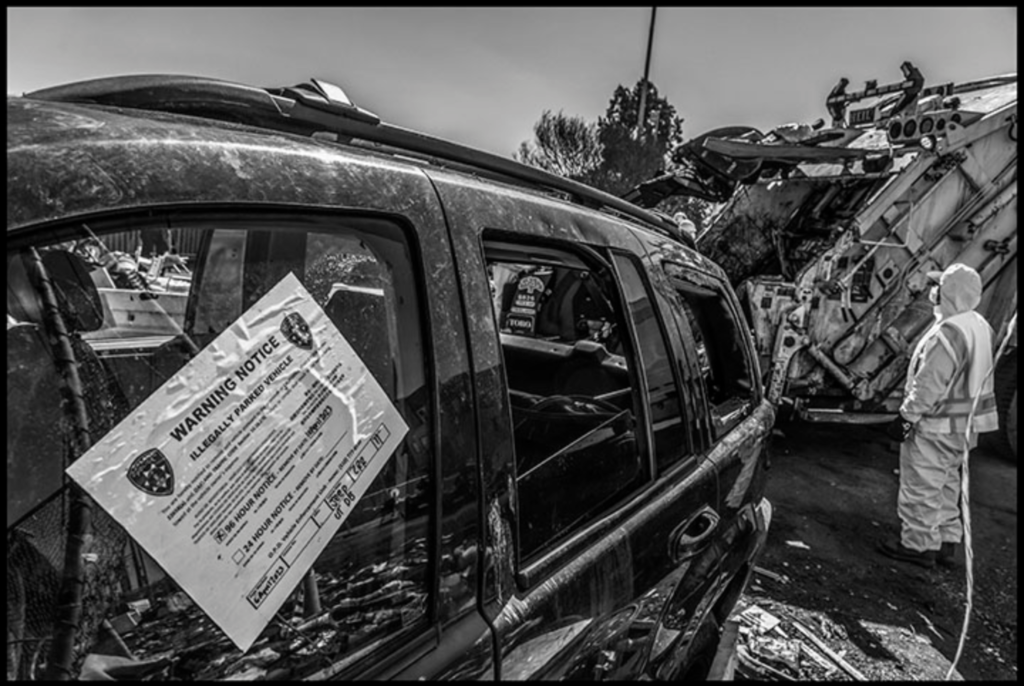
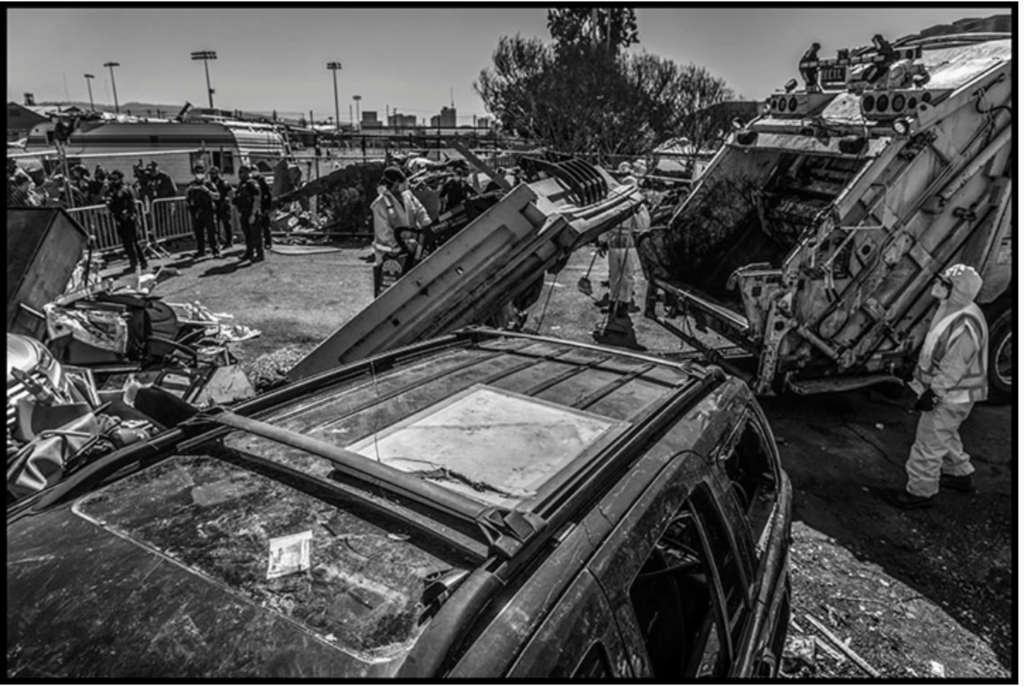
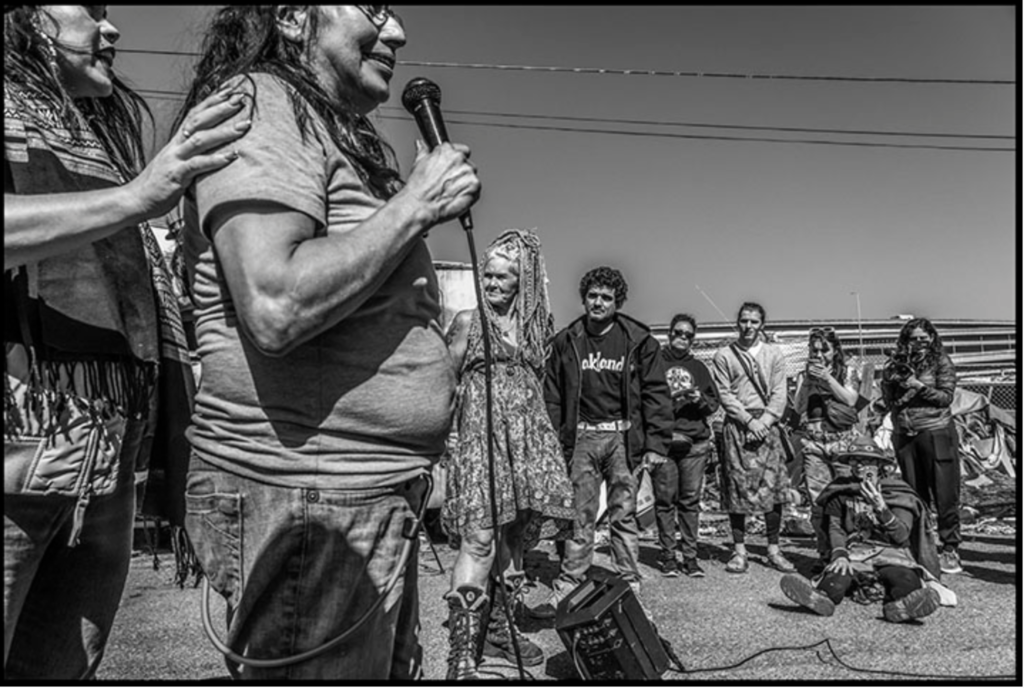
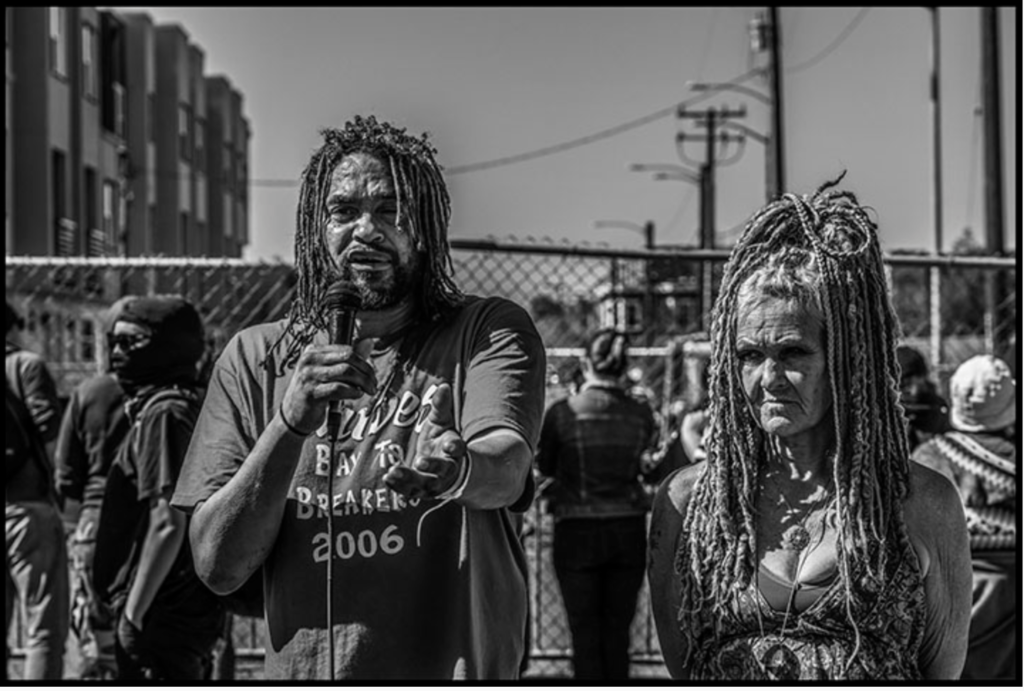
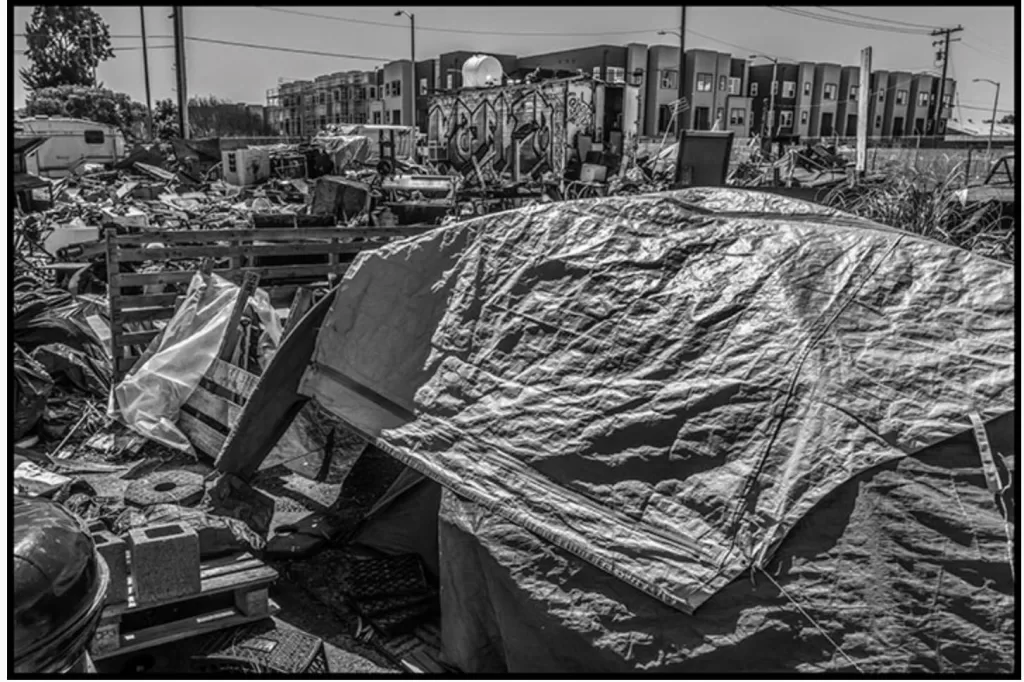

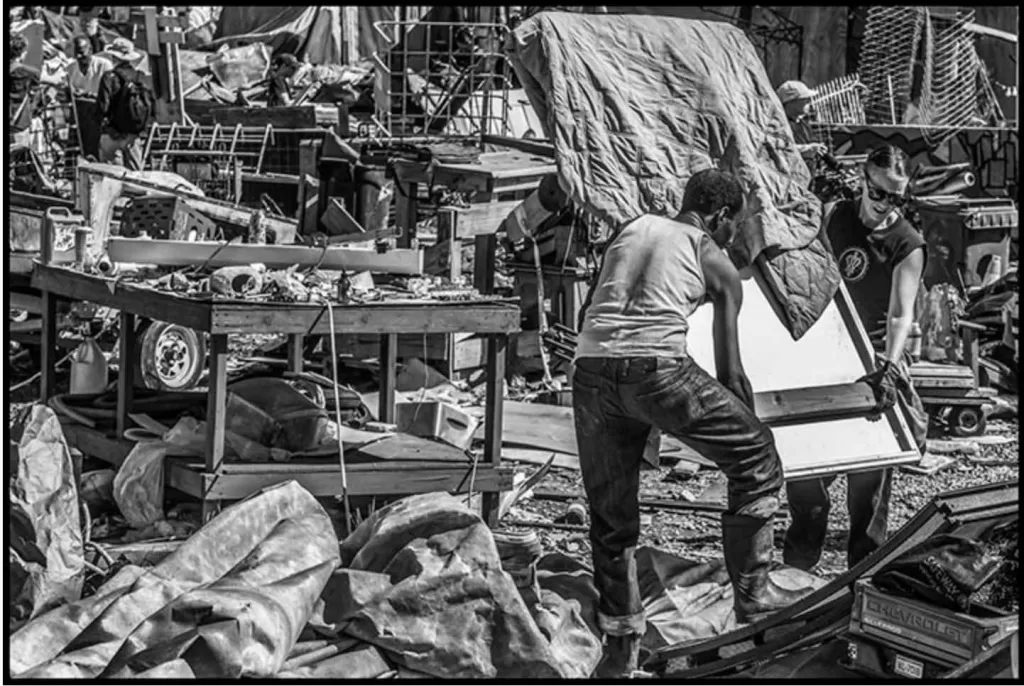

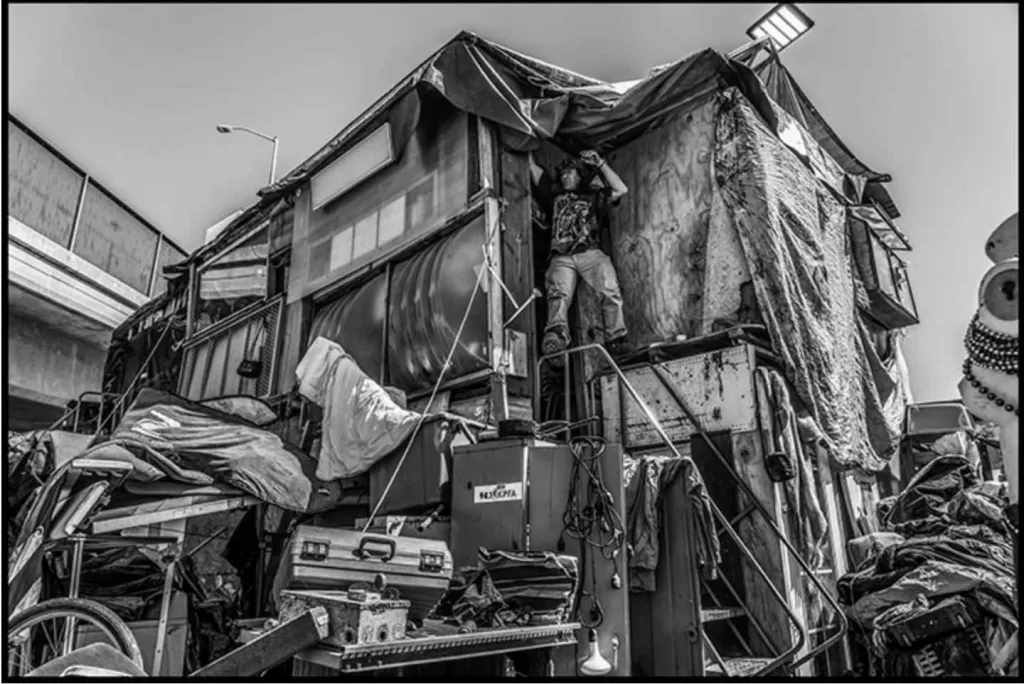

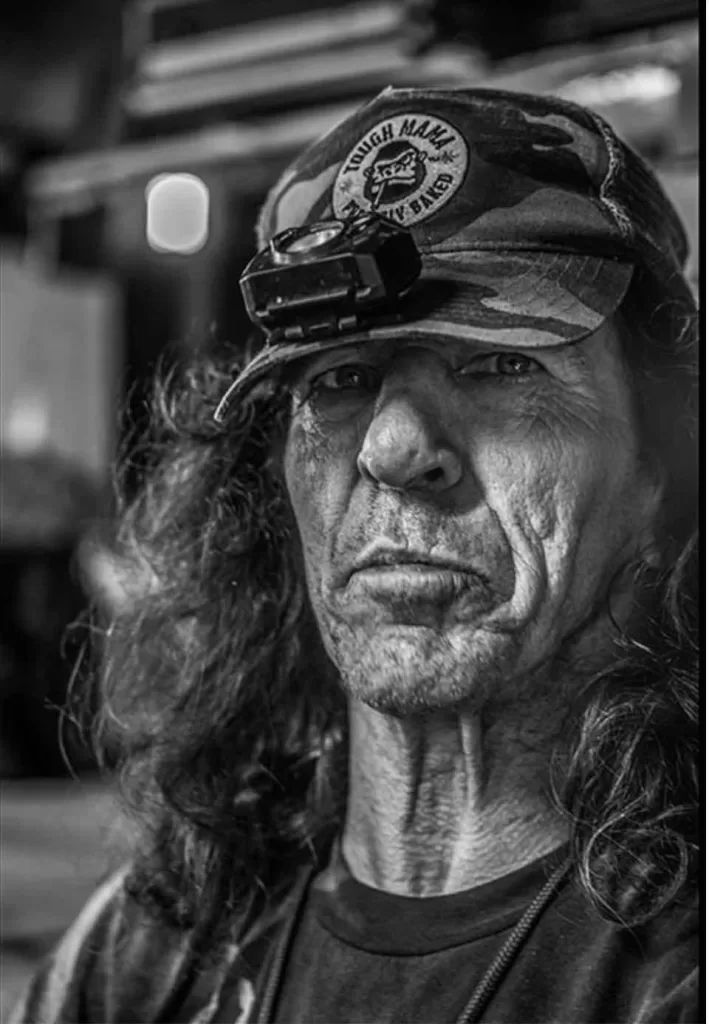
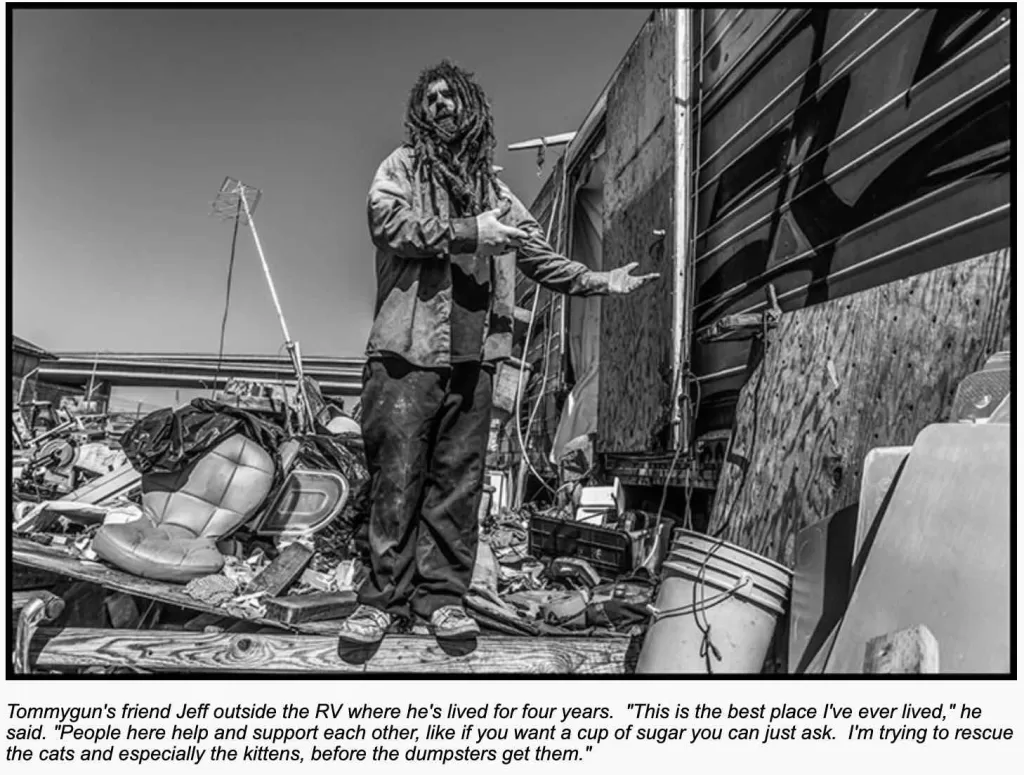
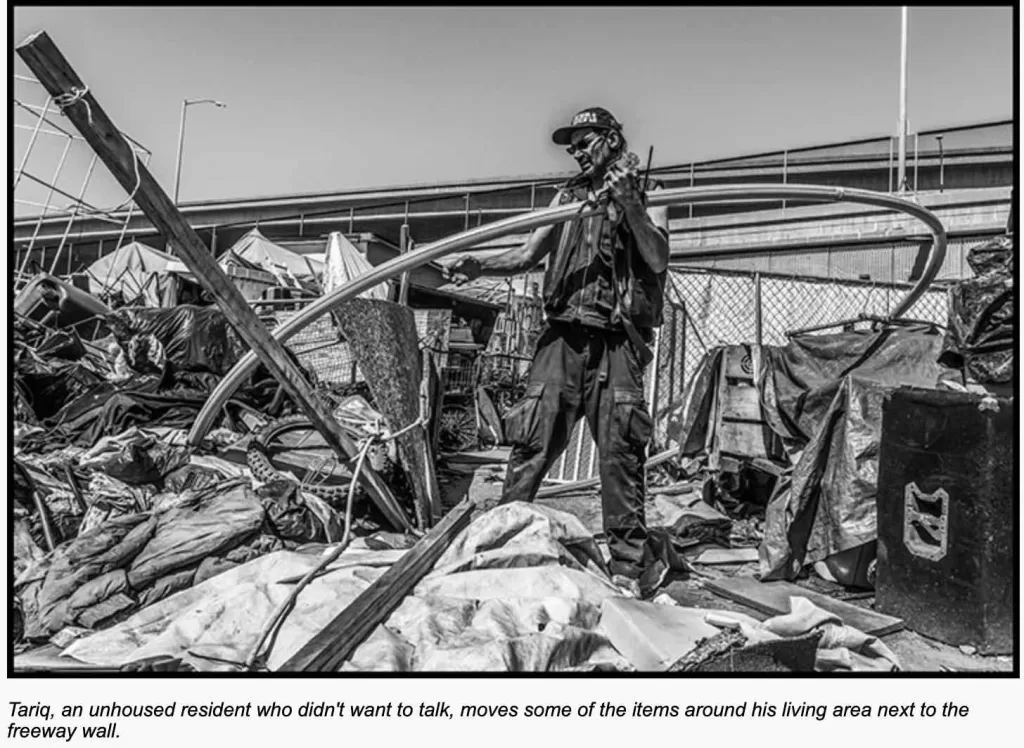
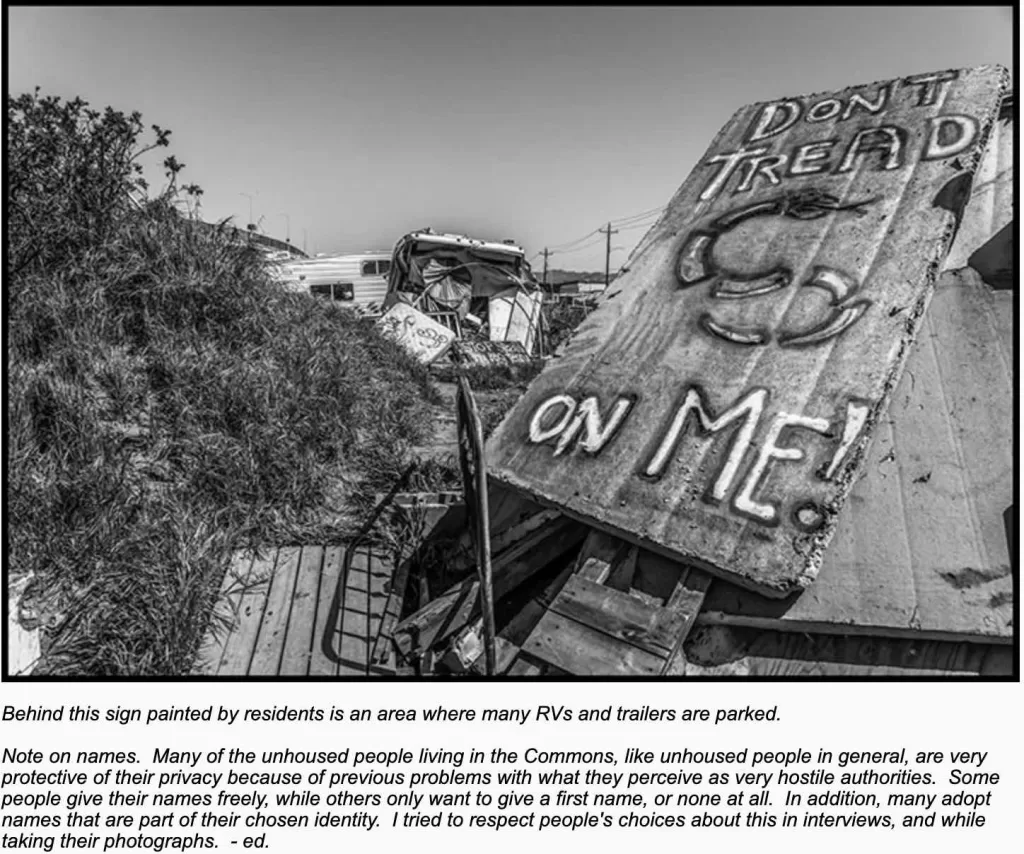
David Bacon is author of Illegal People—How Globalization Creates Migration and Criminalizes Immigrants (2008) and The Right to Stay Home (2013), both from Beacon Press. His latest book, about the US-Mexico border, More Than a Wall / Mas que un muro, is coming in May 2022 from the Colegio de la Frontera Norte.
